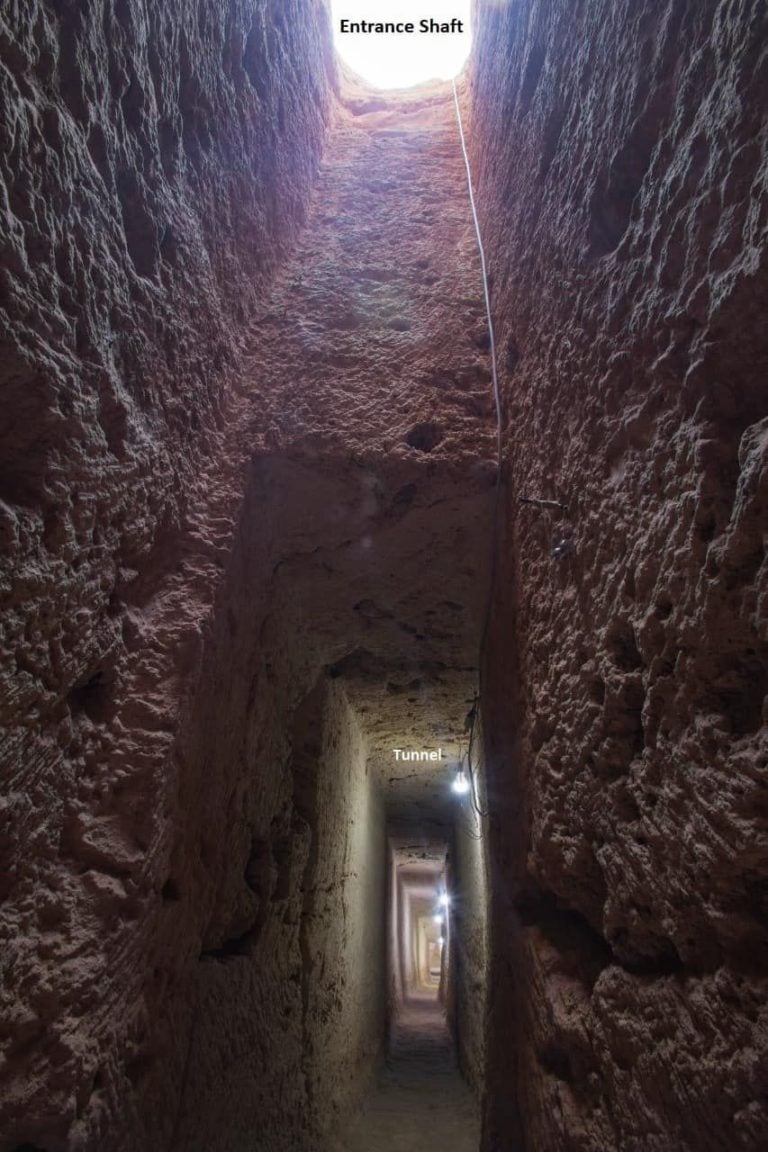
Archaeologists recently discovered an underground tunnel, which may lead to the long-lost tomb of the Greek Queen of Egypt, Cleopatra, beneath Egypt’s ancient Taposiris Magna Temple.
Cleopatra was a Greek and the last ruler of Ptolemaic Egypt from 51 to 30 B.C.E.
The Egyptian Ministry of Tourism and Antiquities announced the discovery in the Fall of 2022, describing the 1,300-meter tunnel located forty-three feet underground as a “geometric miracle.” It was said that it looks similar to the Tunnel of Eupalinos on the island of Samos in Greece.
Excavations continue under the direction of Kathleen Martinez, an archaeologist at the University of San Domingo.

How the research on Cleopatra’s tomb began
About twenty years ago, Martinez began searching for Cleopatra’s tomb in Egypt, confident that after more than a decade of continuous research that Taposiris Magna, dedicated to god of the dead, Osiris, was a leading candidate for the queen’s burial spot.
After endless attempts and multiple ignored emails, Martinez managed to successfully book a meeting with archaeologist and former Head of Egypt’s Supreme Council of Antiquities Zahi Hawass in Cairo.
Even though work has been ongoing since 2004, the new find is the most interesting to date.
“This is the perfect place for the tomb of Cleopatra,” Martinez said according to a report by the blog Heritage Key.
“If there’s a one percent chance that the last queen of Egypt could be buried there, it is my duty to search for her. If we discover the tomb it will be the most important discovery of the 21st century. If we do not discover the tomb…we made major discoveries here, inside the temple and outside the temple.”
The excavations have also revealed mummies with golden tongues and a cemetery containing Greco-Roman-style mummies buried facing the temple.
This supports Martinez’s theory that a royal tomb was built in the area. In addition, twenty-two coins depicting her image as well as a bust believed to depict Cleopatra were found.
Cleopatra, the Greek Queen of ancient Egypt
The ethnic background of Cleopatra, the famed queen of Ancient Egypt, has been a persistent topic of conversation for years. Despite the fact that she ruled over Egypt, Cleopatra was Greek.
Cleopatra VII Philopater ruled over Egypt from 51 to 30 BC and was the last ruler of the Ancient Greek Ptolemaic Kingdom in Egypt. After her death, the Roman Empire took control of the country.
She famously died by suicide after her husband, the Roman general Mark Antony, also killed himself. It is believed that the two were buried together.
The Ptolemaic Dynasty was formed by Ptolemy I Soter, a Greek general in Alexander the Great’s army, in 305 BC. Although located in Egypt, the dynasty that Ptolemy established remained incredibly Greek.
Cleopatra, a direct descendant of Ptolemy, was the first Ptolemaic ruler to learn Egyptian, as those before her all spoke only Greek. She was also believed to have spoken Ethiopian, Hebrew, Aramaic, Arabic, Syriac, Median, Parthian, and Latin.
The name Cleopatra comes from the Ancient Greek words for “glory” (Greek: κλέος pronounced kléos) and “father” (Greek: πατήρ pronounced pater). Thus, the name means “glory of her father.”
Renowned for her intellect and wit, Cleopatra was described as incredibly seductive and persuasive, qualities which added to her mystery throughout the centuries.
Related: What Did Queen Cleopatra Look Like?
See all the latest news from Greece and the world at Greekreporter.com. Contact our newsroom to report an update or send your story, photos and videos. Follow GR on Google News and subscribe here to our daily email!



